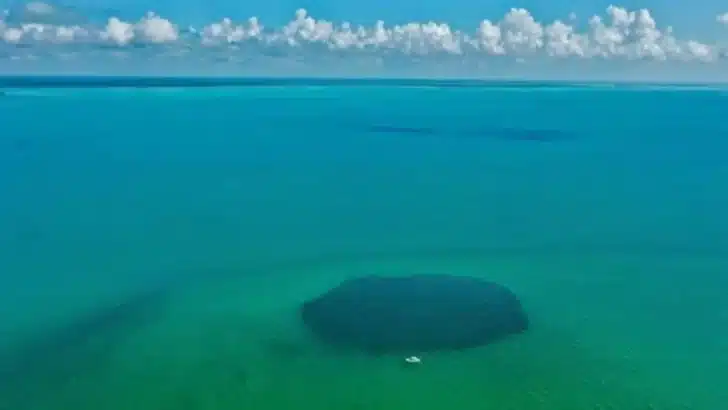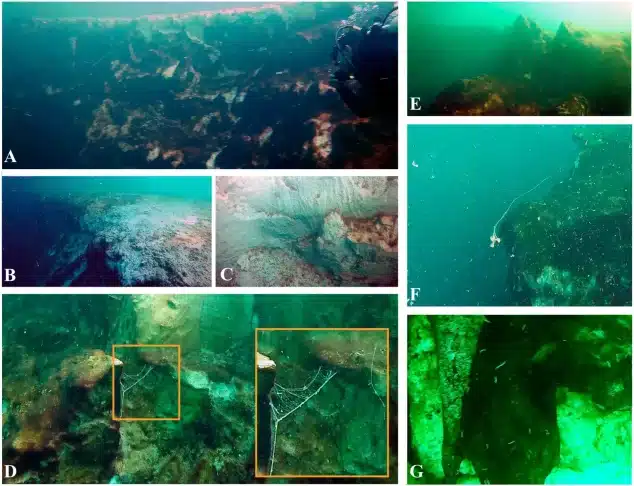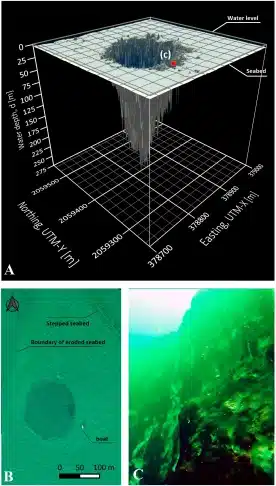Researchers described how the underwater abyss’s extensive depths could harbor a “biodiversity to be explored” in a recent study published in the journal Frontiers in Marine Science.
Indeed, new measurements taken during a December scuba-diving expedition indicate that the Taam Ja’ Blue Hole (TJBH), located in Chetumal Bay off the Yucatan Peninsula, extends at least 1,380 feet (420 meters) below sea level — nearly the height of Trump Tower in Chicago.

“That’s 480 feet deeper than the previous record holder, the Sansha Yongle Blue Hole, aka the Dragon Hole, in the South China Sea, which measures 990 feet to the bottom.”
Known in scientific circles as Karst formations, blue holes are actually vertical marine caves that were carved over thousands of years by glacial runoff during the Ice Age, according to Discovery.com. These sprawling sapphire sinkholes often extend hundreds of feet down and can measure an equal or greater distance across as well. However, scholarship on blue holes is often limited as the lack of oxygen — these portals are filled with the gas hydrogen sulfide — makes it perilous for people to venture into the abyss sans the proper equipment.

“Indeed, while TBJH was initially discovered in 2021, scientists only measured its depth down to 900 feet due to limitations in the echo-sounder technology — which calculates speed based on sound waves — they were using to map it at the time.”
During this latest expedition, aimed at surveying environmental conditions in TBJH, the team used a conductivity, temperature and depth (CTD) profile to take accurate measurements. This state-of-the-art device records and relays water data to the surface in real-time using a cable that extends down 1,640 feet. Despite its cutting-edge capabilities, scientists were unable to gauge TBJH’s maximum depth as the cable was halted at 1,380 feet, potentially by a ledge or underwater currents. The scientists hope to hit bottom on their next excursion.

“Scientists believe that the base might form an “intricate and potentially interconnected system of caves and tunnels” that could potentially house undiscovered lifeforms.”

This subterranean formation could potentially even offer a portal to both space and time like a subaquatic black hole. In 2012, scientists exploring blue holes in the Bahamas discovered bacteria deep in the caves where no other life existed, potentially filling the knowledge “gap” on what types of lifeforms have the capacity to survive on other planets.

